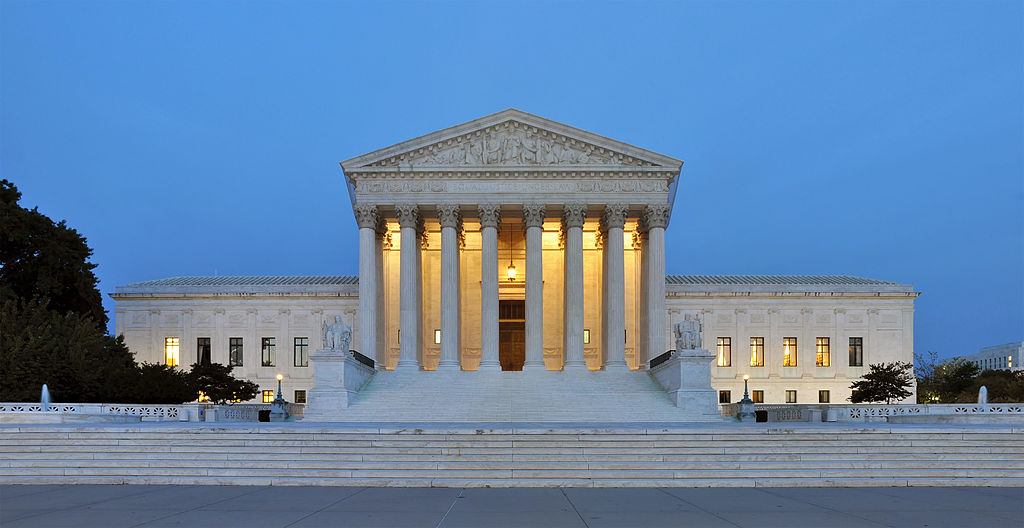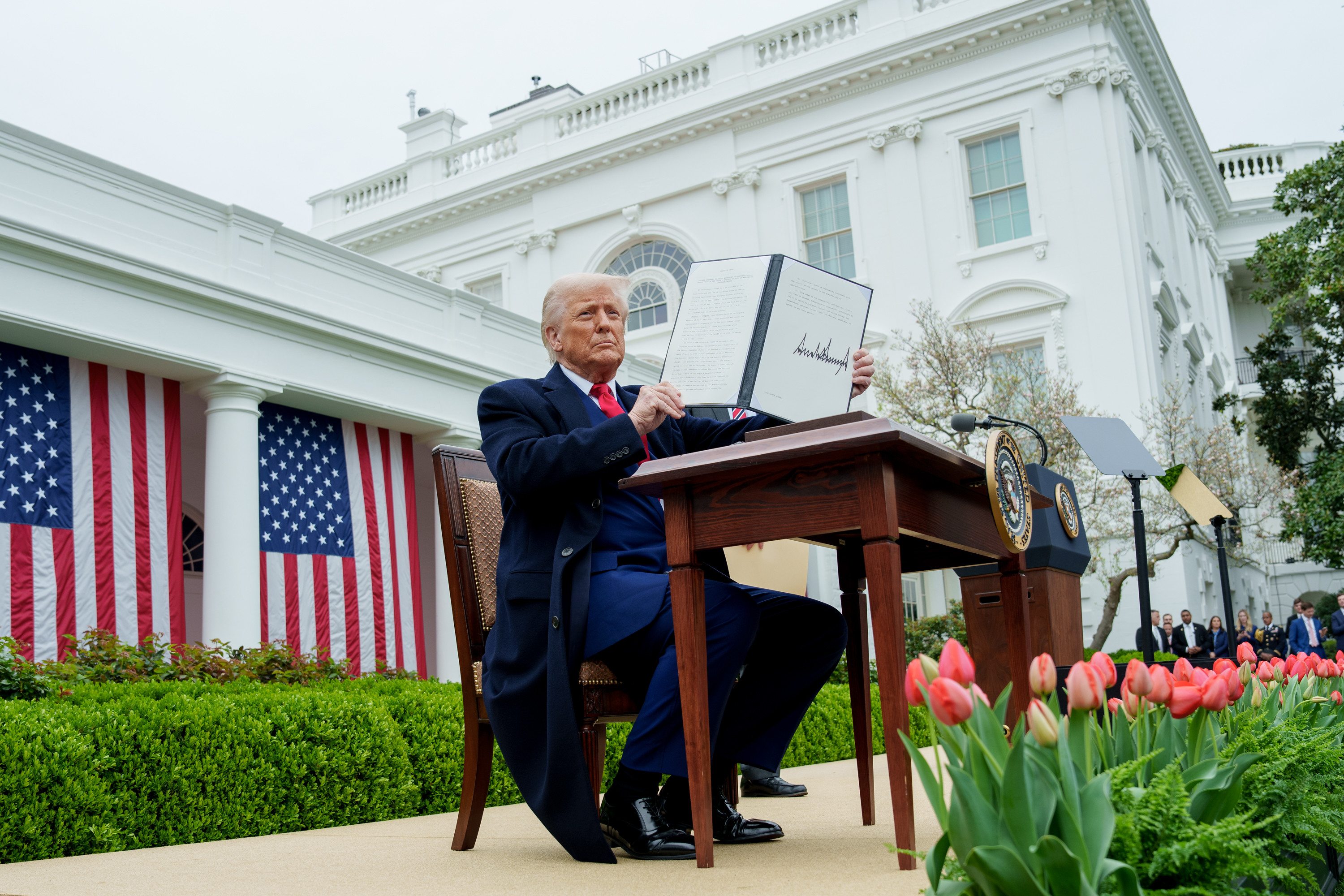Reflections on Ortiz and the Structural Separation of Powers
On Friday, the Supreme Court released its opinion in Ortiz v. United States, a case in which I participated at oral argument as an amicus curiae in January of this year. In relevant part, Ortiz addressed the question whether the Supreme Court has Article III jurisdiction to issue writs of certiorari directly to the Court of Appeals for the Armed Forces (CAAF), an adjudicatory body that sits atop the military justice system for service members.

Published by The Lawfare Institute
in Cooperation With

On Friday, the Supreme Court released its opinion in Ortiz v. United States, a case in which I participated at oral argument as an amicus curiae in January of this year. In relevant part, Ortiz addressed the question whether the Supreme Court has Article III jurisdiction to issue writs of certiorari directly to the Court of Appeals for the Armed Forces (CAAF), an adjudicatory body that sits atop the military justice system for service members. Though called a court by statute, the CAAF (as everyone in the case agreed) is not an Article III tribunal with the Constitution’s life-tenure and salary protections for judges. Instead, it is housed within the executive branch and subject to presidential control—for example, through a provision allowing the president to remove its members for cause. The constitutional question in the case depended on whether these attributes have any impact on the Supreme Court’s ability to assert jurisdiction over, and to supervise, the CAAF directly, as it would any state court or any of the lower federal courts of appeals. I argued that the court lacked Article III jurisdiction. On Friday, the court held that it had jurisdiction. Justice Elena Kagan wrote the court’s opinion, Justice Clarence Thomas a concurring opinion and Justice Samuel Alito a dissent.
As an obscure (not to mention pre-tenure) professor, I was grateful, to say the least, that the justices gave two hoots about what I had to say on the subject of Article III. Now that the opinions are out, I’m doubly grateful that my argument drew reactions from three justices I deeply respect and admire. All that said, I disagree with the Supreme Court’s opinion. In the spirit of a full and frank exchange of ideas, I thought I would briefly explain why.
The shared ground in Ortiz was that the Supreme Court has limited original and appellate jurisdiction under Article III. Article III restricts the court’s original jurisdiction to certain types of cases specified in the constitutional text (which were not applicable in Ortiz itself) and authorizes the court’s appellate jurisdiction only from subordinate bodies exercising “judicial” authority in some relevant sense. (Astute readers may recognize the preceding rule as the one at issue in Marbury v. Madison.) After that shared ground, I parted ways with the federal government and with the petitioners, both of whom argued that the court had Article III jurisdiction because the CAAF was sufficiently “court-like.” I contended, by contrast, that the CAAF’s location within the executive branch rendered the body one to which the Supreme Court could not directly issue a writ of certiorari.
As with many difficult cases, Ortiz involved two competing legal principles that the Supreme Court had previously articulated and that were, seemingly, in tension with one another. The principal challenge in the case was how to reconcile the competing principles.
The first legal principle: The Supreme Court has made clear, in cases like Free Enterprise Fund v. Public Company Accounting Oversight Board, that the Constitution divides “the ‘powers of the [ ] Federal Government into three defined categories, Legislative, Executive, and Judicial.’” That principle was at issue in Ortiz because—as mentioned above and as the court had recognized in Edmond v. United States—the CAAF, though labeled a “court” by statute, is in actuality an “Executive Branch entity.” Thus, one might argue (as I did) that the CAAF exercised “executive power” under Article II; it therefore could not exercise “judicial power” under Article III; and the court therefore lacked Article III jurisdiction to issue writs directly to it.
The second legal principle: The Supreme Court has identified (in cases like Stern v. Marshall and Northern Pipeline Construction Co. v. Marathon Pipe Line Co.) three circumstances in which an entity other than an Article III court may “adjudicate” cases. They are: (1) territorial courts (such as, for example, the courts in Puerto Rico, Guam or Washington, D.C.), (2) courts-martial and (3) cases involving what are known as “public rights.” That principle was at stake in Ortiz because the Supreme Court has also recognized (in an 1894 case called United States v. Coe) that it could take appellate jurisdiction from the highest courts in U.S. territories. Having decided that the court could take appellate jurisdiction from one non-Article III adjudicating entity (territorial courts), one might believe it to be a simple step to say that the Supreme Court could also take appellate jurisdiction from another such entity (the CAAF).
In his Ortiz dissent, Justice Alito stressed the first legal principle. His opinion made numerous references to the CAAF’s executive-branch status. He noted that “[c]ourts-martial . . . have always been understood to be Executive Branch entities” (slip op. at 3); he contended that the court wrongly held “that Congress may confer part of the judicial power of the United States on an entity that is indisputably part of the Executive Branch” (id.); he said that, “just as in Marbury, we are here asked to resolve a dispute that has been presented only to Executive Branch officers” (id. at 8); and he concluded that the CAAF is “an agent of executive power” (id. at 30). On the dissent’s view, as an executive agent, the CAAF could not be subject to the Supreme Court’s direct “appellate” review.
In her opinion for the court, Justice Kagan stressed the second legal principle. The majority referred to territorial and D.C. courts as “courts [ ] closely resembling” courts-martial because “each involv[es] a non-Article III judicial system created by Congress” (slip op. 12). It contended that the “non-Article III court martial system stands on much the same footing as territorial and D.C. courts,” because both rest on “an expansive constitutional delegation” (id. at 14). And it argued that the three types of courts—territorial, D.C. and the CAAF—may be “lumped . . . together” (id.), because the CAAF (unlike other military commissions) has “sufficient” “judicial character” to “align it [ ] with territorial and D.C. . . . courts of appeals” (id. at 18).
Viewed from the perspective of these two legal principles, the fundamental question in Ortiz was as follows: Is the CAAF in the executive branch for all constitutional purposes, as the dissent contended, or is it part of a cluster of non-Article III entities that can be treated in some sort of hybrid fashion for separation-of-powers purposes, as the majority argued?
In my view, there is a way to resolve the tension between these two legal principles, and it depends on the recognition that grouping the three “exceptions” to Article III adjudication (courts-martial, territorial courts and “public rights”) is an accidental, modern and somewhat misleading characterization. The grouping of the three is fine as shorthand; it is flawed if taken too literally to mean that the three exceptions derive from the same foundations and have the same scope. Properly understood, the three “exceptions” stem from different constitutional sources and historically were treated distinctly and separately. “Lumping” the three exceptions together—to use the Supreme Court’s term—has mischievous consequences for the separation of powers.
Let me illustrate with a hypothetical that should provide common ground. The Constitution contains a provision—known as the Appointments Clause—specifying that “officers of the United States” must be appointed using certain constitutionally prescribed mechanisms. It is readily apparent that this clause is not followed in the territories or the District of Columbia, which have elected governors, elected legislators and (in the latter case) an elected mayor. Separate election by the people is not one of the mechanisms contemplated by the Appointments Clause. Yet the majority’s logic that the “expansive constitutional delegation” for the territorial exception and the court-martial exception have the same scope naturally prompts the following question: Does the exception to the Appointments Clause for the territories and D.C. mean that a comparable exception exists for the military justice system? Surely, the answer is no. Congress could not, by statute, authorize separate federal elections for the members of the CAAF. In other words, Congress can make certain separation-of-powers accommodations in the territories that it could not make for officials staffing the CAAF.
The above hypothetical makes clear that there must be some separation-of-powers distinction between, on the one hand, the territories and D.C. and, on the other hand, the military system—not merely as a matter of geography, but as a matter of fundamental constitutional principle. The distinction extends beyond the Appointments Clause and to the scope of Article III. In holding to the contrary, the Supreme Court quotes my statement at oral argument that territorial and D.C. courts are “functional equivalents of state courts” and contends that the same “could be said for courts-martial too” (slip op. 16). Yet the court’s unqualified statement is demonstrably incorrect. Territorial courts, like state courts, adjudicate domestic relations cases, nuisance tort claims, contract disputes and the whole panoply of common-law actions not amenable to resolution in federal court. Surely, it would violate Article III if Congress were to authorize courts-martial to adjudicate such cases. As with the Appointments Clause, under Article III, Congress may permit the assignment of certain kinds of cases to territorial courts that it may not assign to the CAAF.
Once one accepts that there is in principle (not merely as a matter of “convenience” (slip op. at 15-16)) a constitutional distinction between courts-martial and territorial courts, it falls to text, logic and history to tell us where to draw the line in the differential constitutional treatment of the two. Here, there is a historical distinction: The schemes of territorial governance are historical “exceptions” not merely to Article III adjudication, but to the separation-of-powers principles contained in the Constitution generally. That is why territorial executives can be independently elected. It is also why independently elected territorial legislators are permissible. And it is why the territorial courts are the “functional equivalents” of state courts in a manner quite different from the CAAF or administrative agencies.
By contrast, the “military court” and “public rights” doctrines are not exceptions to the separation of powers generally, but rather an “exception” to Article III adjudication in a different sense. Under these doctrines, in limited circumstances, executive-branch officials may make certain factual and legal determinations, as an exercise of “executive power,” that have preclusive effect in proceedings before Article III courts. Contrary to the Ortiz opinion (as well as Justice Thomas’s concurrence), this is the original and the historical understanding of the relationship between “adjudication” in the executive branch and the exercise of “judicial power” by the courts.
Lastly, I must add that the Supreme Court’s opinion supplements the analogy to territorial and D.C. courts with repeated comments about how courts-martial “resemble” Article III courts (slip op. at 9) and have a judicial “character” (id. at 8), referring specifically to the CAAF’s “court-likeness” (id. at 16). Yet, earlier this very term in Oil States Energy Services v. Greene’s Energy Group, the Supreme Court held that it has “never adopted a ‘looks like’ test to determine if an adjudication” involves an exercise of judicial power—a holding that, to my mind, correctly establishes that “court-likeness” is irrelevant to Article III. The Ortiz Court nowhere explains its pivot in constitutional approach. Some principled rationale—not provided by either the Oil States or the Ortiz opinions—is necessary to explain why the “court-likeness” of a body is significant for certain constitutional purposes but irrelevant for others.
* * *
The Framers of the Constitution limited the Supreme Court’s original and appellate jurisdiction primarily because of the burdens that travel to a centralized court placed on U.S. citizens in the 18th century. Rather than require litigants to journey long distances to a central court in the first instance, the Constitution contemplates some local adjudication, followed by an appeal to the “one Supreme Court.” In our modern era, the constitutional text has remained the same while advances in transportation capabilities have happily reduced, though by no means eliminated, this concern. Those advances do not diminish Ortiz’s jurisprudential importance, but they limit, in some ways, the consequences of Ortiz’s precise holding about the Supreme Court’s appellate jurisdiction.
Nevertheless, the same tension between the two legal principles that I have identified above has arisen before and will surely arise again in other contexts—perhaps next time in a case with significant real-world consequences. At that time in the future, one can only hope that the Supreme Court will articulate legal principles that apply consistently to a broad set of cases and that are readily traceable to the Constitution’s text, structure and history.





